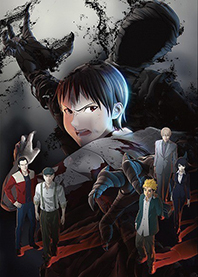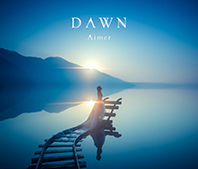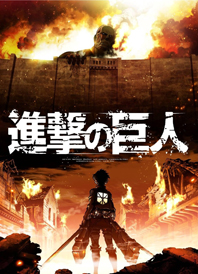Hiragana
Introduction of the Japanese Hiragana alphabet
About Hiragana
Hiragana is one of three character sets used in the Japanese language.
Each Hiragana letter represents particular syllable. Letter itself has no meaning.
Hiragana is used widely to form a sentence.
You can download/print Hiragana chart (PDF) of all Hiragana letters.
Origin
| Hiragana | あ | か | た | ま | や |
|---|---|---|---|---|---|
| Original Kanji | 安 | 加 | 太 | 末 | 也 |
Hiragana was developed in the 8-10th century by simplifying the form of particular Kanji symbols.
Compared to Katakana, Hiragana letters have more curved lines.
Number of Letters
In modern Japanese, there are 46 basic Hiragana letters.
In addition to these 46 basic letters called gojūon, there are modified forms to describe more sounds - 20 dakuon, 5 handakuon, 36 yōon, 1 sokuon and 6 additional letters.
FAQ: What are the letters with a bar on top (ā ū ē ō)?
Gojūon 【五十音】
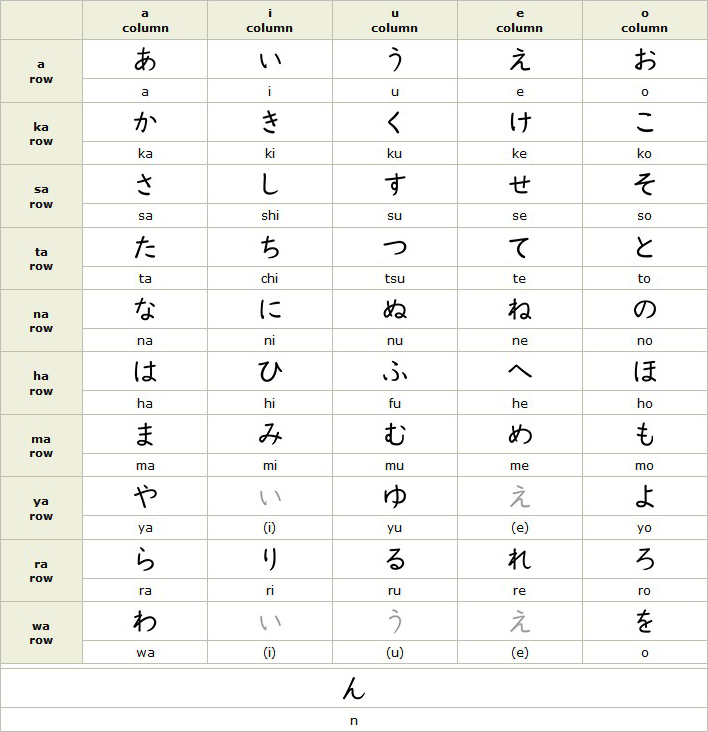
Gojūon-zu 【五十音図】
In Japanese, syllables are organized in the form of a table (5 x 10). This table is called gojūon-zu (literally means table of 50 sounds).
To describe these sounds, Hiragana and Katakana alphabets are used.
Letters い, う and え appear more than once in the table. These 5 duplicates (gray colored) are usually skipped or ignored.
Another syllable ん is included. It doesn't belong to any row or column.
In total, 46 letters (45+1) are counted as gojūon (50 sounds).
You can learn gojūon letters at Hiragana Course: Part 1-10.
Structure of the Table
The first row - あ [a], い [i], う [u], え [e] and お [o] are five vowels of the Japanese language.
Letters in the same column contain the same vowel.
Letters in the same row are considered to contain the same consonant.
Letters お and を represent the same sound [o]. を is used only as the particle in a sentence.
Dakuon 【濁音】
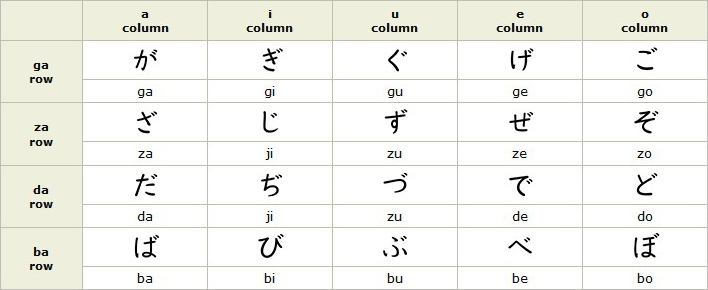
Dakuon literally means turbid or murky sound. It is the voiced sound of か [ka], さ [sa], た [ta] and は [ha]-row syllables.
Dakuon is indicated with two small dots.
Pronunciation of じ and ぢ, ず and づ are the same.
You can learn dakuon letters at Hiragana Course: Part 11.
Handakuon 【半濁音】

Handakuon literally means half-turbid or half-murky sound.
Handakuon is indicated with a small circle.
You can learn handakuon letters at Hiragana Course: Part 11.
Yōon 【拗音】
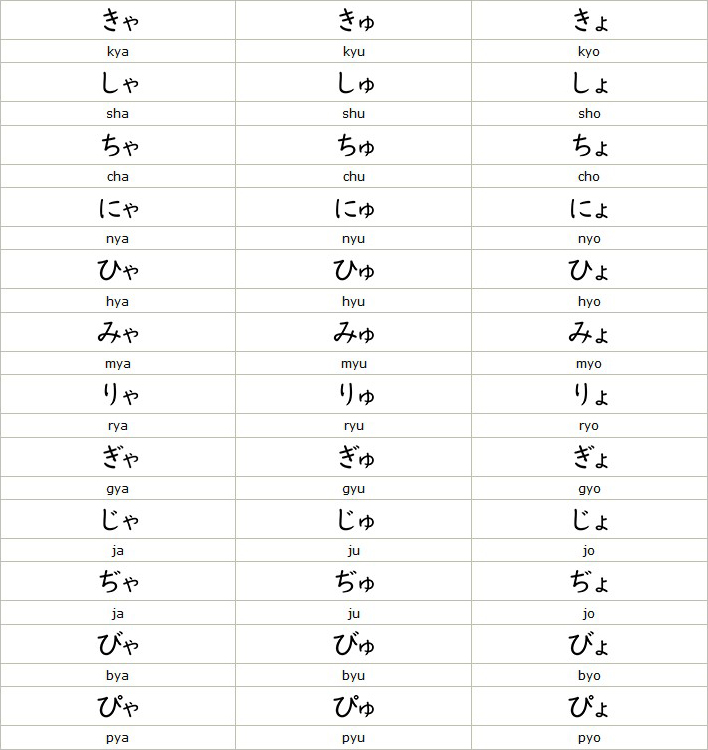
Yōon is a combination of the consonant of i-column syllables and ya, yu or yo. For example, k + ya = kya.
Yōon is described by i-column letters plus small や, ゆ or よ. For example, き + ゃ = きゃ [kya].
Pronunciation of じゃ, じゅ, じょ and ぢゃ, ぢゅ, ぢょ are the same.
You can learn yōon letters at Hiragana Course: Part 12-13.
Sokuon 【促音】
| pause |
Sokuon is a pause (no sound) between two syllables.
Sokuon is described by small つ.
| Examples | |||
|---|---|---|---|
| さっき [sakki] | ひっし [hisshi] | いった [itta] | やっぱり [yappari] |
Pronunciation of sokuon is not very easy. Hiragana Course: Part 14 explains it in detail.
Additional Letters
These additional letters are invented in modern era to describe the sounds of foreign language.
Note: Foreign words are usually written in Katakana. These additional Hiragana letters are rarely used.
| Examples | ||||
|---|---|---|---|---|
| ふぁ [fa] | てぃ [ti] | どぅ [du] | うぇ [we] | ふぉ [fo] |
Small あ [a], い [i], う [u], え [e] and お [o] are attached after particular letters.
| Examples | ||||
|---|---|---|---|---|
| う゛ぁ [va] | う゛ぃ [vi] | う゛ [vu] | う゛ぇ [ve] | う゛ぉ [vo] |
う゛ is used for [v] sound.
Printable Hiragana Chart
| Item | File Type | Size |
|---|---|---|
| Hiragana Chart | 460 KB |
Click the link listed above. PDF document will be displayed (1 page).
To save the file, choose [Save As...] from [File] menu.
To print on a paper, choose [Print...] from [File] menu.
Learning Hiragana
Learning Hiragana is easy. It takes about 3-20 days in general.
Try Hiragana Course - free online study program for learning how to read, write and type Hiragana fast and easy.
Common order of character study is Hiragana first, Katakana next, and then Kanji.
See Study Guide page for more details.



